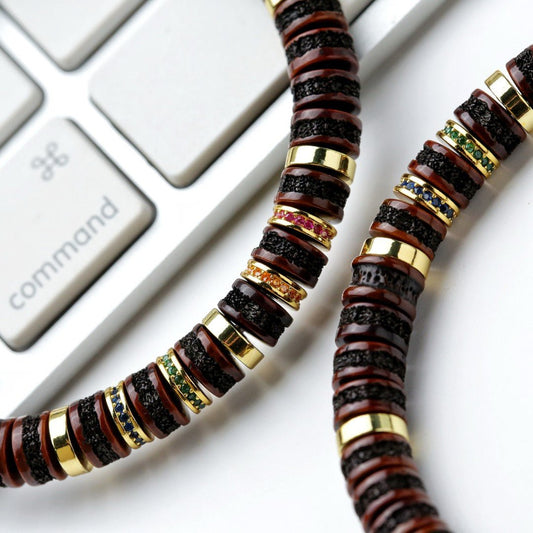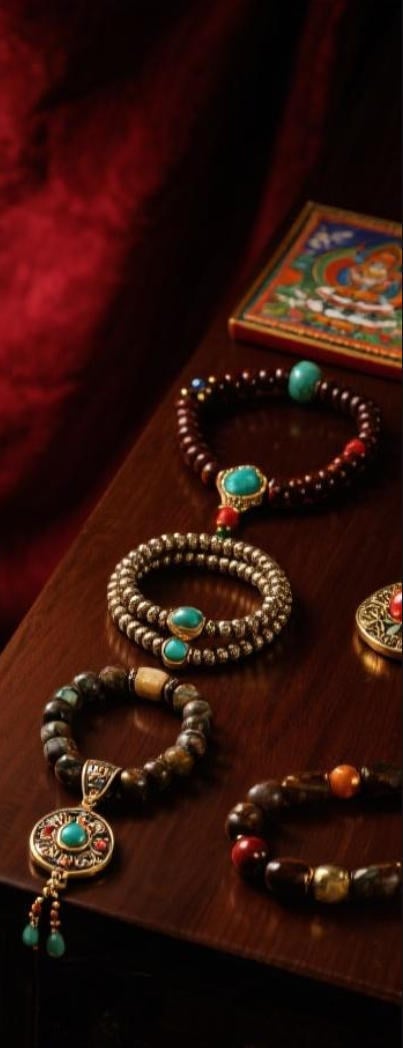
Within the meticulous design amidst Tibetan religious beliefs exist a pair of significant objects: the thangka and the bodhi bead. Individually, in particular fashion, offer access to elevated consciousness. The thangka, a sacred artwork, portrays sacred entities, ritual circles, or spiritual tales, functioning as a reflection instrument.
On the other hand, the bodhi bead, often crafted from semiprecious minerals, wood, berries, or skeletal fragments, is a tangible reminder of Buddha's nirvana under the bodhi tree. Clutching the beads in contemplation anchors consciousness.
- As a pair, the thangka and the bodhi bead embody the synergy between expression and belief. They offer a tangible link to the historic sagacity of Tibetan Buddhism.
Legends Echoed from Camel Remains
Through the passage of eras, ages-old treasures whisper tales involving a world long lost. These are not treasured objects of neglected empires, but unpretentious camel bones fashioned with figures that retain the unknowns of a bygone era. Each bone holds the echo emanating from a life lived, a journey experienced, and a connection to the timeless wisdom that envelops us all.
- It
- Relics
- Function as
Delving into the Depths of Thangka Art: A Symbolic Journey
Tangkas are captivating paintings on canvas, meticulously crafted by Tibetan artists to depict sacred figures and scenes from Buddhist doctrines. Each detail within a thangka is laden with meaning, forming a complex tapestry of visual narratives that guide the viewer on a spiritual journey. The palettes used in thangkas are not merely aesthetic choices but carry profound connotations, exemplifying different aspects of the Buddhist teachings. From the serene figures to the intricate ornamentation, thangkas offer a view into the rich world of Tibetan Buddhism, inviting us to study upon its enlightenment.
- Established thangka art often depicts key Buddhist figures such as Buddha Shakyamuni, Bodhisattvas like Avalokiteshvara and Manjushri, and enlightened beings from various movements of Tibetan Buddhism.
- Through these representations lies a wealth of wisdom that can be decoded by those who delve into the symbolic language of thangkas.
The Buddha's Path to Enlightenment: Embodied in Beads and Bone
Upon the winding journey to nirvana, the Buddha embraced symbols imbued with profound influence. The very bead and element held within them the core of his instruction, expressing glimpses into the unfolding of reality. By means of their configuration, the Buddha conveyed profound discoveries that outstrip the realm of prosaic perception.
From those sacred beads, crafted from precious materials, arose vibrations that sounded with the subtle forces within. The bone of a organism, meticulously transformed into relics, served as tangible emblems of the impermanence innate to all entities.
Thangkas: Windows into Himalayan Spirituality
Thangkas radiant paintings on cloth serve as strong representations of Himalayan spirituality. These intricate works of art, meticulously created with artful brushstrokes, depict a vast array in Buddhist deities, mandalas, and scenes from venerable scriptures. Each thangka is a spiritual map for meditation and contemplation, offering wisdom into the deep teachings of Buddhism.
- They are often used in ritual ceremonies as part of
- transcending states of spiritual transcendence.
- Thangkas function as not merely decorative artefacts but rather windows into the rich and alluring world of Himalayan spiritual traditions.
Bodhi Beads: A Journey Through Mindfulness and Compassion
Each unit on a bodhi bead mala whispers tales of ancient wisdom, guiding us on a path through the tranquil waters of mindfulness. As we grip these intricately shaped beads, our fingers trace the contours of separate one, anchoring our concentration in the present moment. The gentle texture of the beads against our palms serves as a tangible reminder to inhale, fostering a sense of peace.
- Every time bead that passes between our fingers, we cultivate compassion, extending it first to ourselves and then outward to the world.
- Eastern philosophy teaches us that mindfulness is a skill that requires patience and persistence.
Through the rhythmic repetition of mantra or simply the mindful registering of the beads, we liberate from the relentless chatter of the mind.
The practice engaging with bodhi beads is a refined invitation to renew our connection with ourselves and the world around us.
Soulful Creation: Camel Bone Bracelets Enhancing Spiritual Progress
Intention is a powerful force in our lives, shaping our experiences and guiding us towards our sacred journey. When we combine this intention with the ancient wisdom of crafting a camel bone bracelet, we create a potent synergy that can amplify our spiritual growth.The camel bone itself is symbolically rich, representing strength. Its natural beauty and enduring grace serve as a constant reminder of the inherent power within each of us.We thoughtfully choose each fragment, imbue the piece with purpose. With every knot or tie, we interlace our hopes, dreams, and aspirations for spiritual evolution. This act of creation becomes a spiritual custom, bonding us with our inner wisdom and guiding us on a path of transformation.- Allow the bone’s pigments to mirror your sacred objectives.
- Channel your willpower throughout the weaving process.
- Place it on an altar dedicated to your spiritual practice.
Camel Bone's Role in Buddhist Iconography
In the rich tapestry amidst Buddhist tradition, artifacts often hold profound symbolic meaning. Throughout these varied objects, camel bone stands out as a exceptional and gripping element. Across history, this material has been used in the crafting for various Buddhist relics, each imbued with specific representations.
- Recognized as a symbol of resilience and strength due to the camel's ability to thrive in harsh environments, camel bone often stands for spiritual fortitude.
- Additionally, the color and texture against camel bone are believed with some to hold auspicious connotations, reflecting purity and serenity.
As a result, camel bone has become a important part of Buddhist heritage, serving as a tangible bridge to the profound teachings contained in this ancient faith.
Thangka Art: Weaving Tales of Divinity
Within the ethereal realm of Tibetan Buddhism, Thangka paintings emerge as sacred portals to enlightenment. These exquisite works, meticulously crafted by skilled artists known as thangkapa, depict a myriad consisting of vibrant deities, celestial beings, and mythical creatures. Each brushstroke saturates profound spiritual significance, narrating ancient tales and philosophical dogmas.
- Presenting a vast group of Buddhist iconography, Thangkas serve as both devotional objects and instructional tools. Loyal practitioners gaze upon these paintings during rituals and meditations, seeking to pursue spiritual wisdom.
- Adorned with intricate details in an abundance of vibrant hues, Thangkas are considered windows into the divine. Each painting acts as a symbolic representation of the Buddha's teachings and the path to liberation.
Via their compelling imagery and symbolism, Thangka paintings offer a glimpse into the rich spiritual traditions of Tibet. They are a testament to the enduring skill of Tibetan art and its profound ability to stimulate.
Embracing the Duality: Thangkas and the Cycle of Life and Death
Thangkas, these colorful embroidered scrolls native to Tibet, provide an insightful exploration into the fleeting nature of life. Each intricate sketch depicts deities and beings engaged in the evolving journey of life and death, a array of birth, growth, impermanence, and renewal. The artists skillfully integrate these concepts within the thangka's realm, highlighting the correlation of all things. Through vivid motifs, they invite us to consider on our own continuity. The cycle endures, a tempo of coming and going, accentuating the preciousness of each moment. By embracing this duality, thangkas teach us to value the beauty in both life's joys and sorrows.Bonds of Serenity: The Significance of Bracelets in Buddhist Practice
In the intricate tapestry of Buddhist practice, seemingly basic objects often hold profound meaning. Among these are bracelets, which serve as tangible indicators Thangka of devotion and commitment to the journey of Buddha. Worn on the wrist, a bracelet works as a constant reminder of one's aspirations and objectives. It can represent the impermanence of life, stimulating practitioners to remain present in the present moment. Some bracelets may feature sacred marks, such as mantras or the names of Buddhas, which are viewed to elicit positive energy and safety. Others might be made from constituents with spiritual significance, like sandalwood or lotus seeds, improving the bracelet's meaning. Ultimately, the significance of a Buddhist bracelet originates far beyond its physical form. It becomes a powerful tool for introspection, a stimulus to live in harmony with the teachings of Buddha, and a embodiment of one's unwavering allegiance.